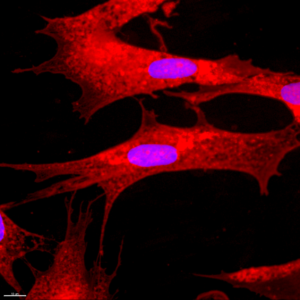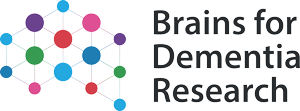BDR Stem Cell and Fibroblast Resource
The BDR Stem Cell and Fibroblast Resource is a new collaboration between the Brains for Dementia Research network, Newcastle Brain Tissue Resource (NBTR) at Newcastle University and the Brain Banks Network: Database of Tissue Samples. The project is based on a pilot conducted where fibroblast-like cells from over 200 different post-mortem brain donors were isolated and banked.
The aim of the new BDR resource is to isolate primary fibroblast-like cells from as many donors as possible entering the BDR donation program. Selected donor lines will then be converted into induced pluripotent stem cells (iPSC). This will provide an unprecedented bank of cell lines where both the clinical history of the donor is known, along with subsequent confirmation of pathology.
How are the stem cells derived?
In collaboration with the BDR centres in Bristol, Kings College London, Manchester, Newcastle, and Oxford, small brain tissue samples are collected at post mortem. The tissues are shipped to Newcastle for processing to derive fibroblast cells from cortical tissue or the choroid plexus. Colonies of fibroblast-like cells establish within 2-3 weeks and these are expanded and frozen down at low passage as part of the bank. In addition, RNA, DNA and protein from donor lines is also prepared.
The BDR resource will isolate cells from donors who have been diagnosed with different forms of dementia including Alzheimer’s Disease, Dementia with Lewy Bodies, Frontotemporal Dementia and Vascular Dementia, along with cognitively normal control donors.
iPSC
In addition to the banked fibroblast-like cells, as part of the BDR resource we will generate an iPSC bank in partnership with the Brain Banks Network: Database of Tissue Samples. Using standardised and highly reproducible methodology, iPSC are generated and characterised for their trilineage potential and ability to form mesoderm, neuroectoderm and endoderm.
How to find out what are the available cell lines?
The BDR project aims to bank over 150 fibroblast-like cell lines, and 50 iPSC lines. Cell lines will be stored at Newcastle and can be viewed through the Brain Banks Network: Database of Tissue Samples alongside clinical and pathological information and brain tissue availability.


